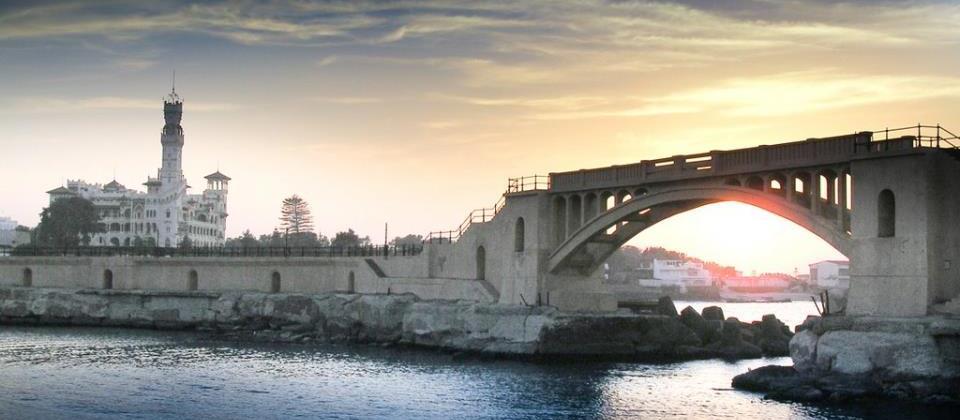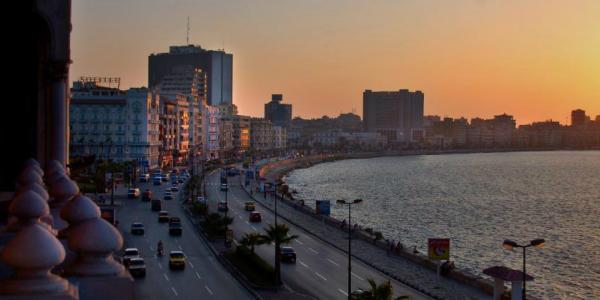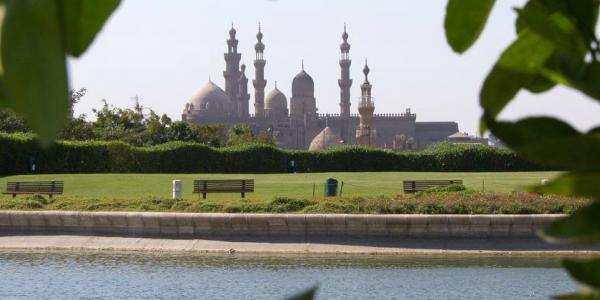Montazah Palace and Gardens

On the east side of the Corniche waterfront, there are fantastic beaches and the Montazah Palace and gardens. There are many places to walk and enjoy the greenery, the old Salamlek hotel in all its splendour, a great shore line and the mansions of the well-to-do. An additional Royal palace, known as the Haramlik Palace, was commissioned by King Fuad and designed by Ernesto Verruchi. It was built in the Montazah Palace gardens in 1932 by King Fuad although the first stone had been laid in 1892 by Khedive Abbas II. The Montazah Palace and Gardens are very attractive places where you can enjoy breathtaking views of the Mediterranean Sea in wonderful leafy surroundings with roses and other flowers. The area has a 5-star hotel, many restaurants, a beautiful sea view and a water-sports club.
Abu Qir wrecks and the sunken cities of Abu Qir
Abu Qir is a village situated on a point some 23 km northeast of Alexandria. It has excellent fish restaurants, inherited from its time as a fishing village.
In the sea nearby, archaeologists have been exploring the sunken cities of Heracleion and Canopus since 1992. Besides being a prominent religious centre, the city of Heracleion was the main trading point on the Mediterranean in the 6th century. When they started diving this site, archaeologists discovered the ruins of the temple of Heracleion, a city dedicated to Amun and Heracles-Khonsu. They also found giant statues of gods, Ptolemaic kings and their consorts, pottery, jewellery and numerous wrecked wooden ships.
Legend has it that Canopus is where the Goddess Isis found the last part of Osiris's savaged body. Ancient Egyptians believed that Osiris was murdered by his jealous brother Seth, who scattered the dismembered parts of his body all over Egypt. According to Egyptian mythology, Isis succeeded in finding the scattered pieces and placed them in a vase that was kept at Canopus. The site, which has hundreds of Greco-Roman amphorae, attests to the extensive trade connections between Egypt and the Roman Empire.
Archaeological dives to the site of the Sunken Cities of Abu-Qir can be arranged through the Montazah diving centre in Alexandria.
Abu Qir is also the site of one of the most famous sea battles in history, between the British Royal Navy under Lord Nelson and the Napoleonic French fleet. Nelson won, so enabling the British to break the French hold on Egypt, allowing the Ottoman commander, Muhammad Ali to establish his dynasty a few years later. The French lost eleven ships and the British two. The French flagship L’Orient was found in the 1990s by the underwater archaeologist Franck Goddio, 8 km offshore in 11 meters of water. They also discovered the Serieuse and the Artemise.
Taposiris
Taposiris Magna (today called Abusir) is a Ptolemaic city and temple located 45 kilometres west of Alexandria. It is one of the Greco-Roman sites on the north coast. It was founded in around 280-270 BC by the Pharaoh Ptolem II Philadelphus on the northern shore of Lake Mariout. This ancient city, which the ancient Egyptians called Per Usiri meaning the Dwelling of Osiris, is claimed to be the site of Osiris' tomb. As its name suggests, the temple of Taposiris was one of the religious centres for worshipping Osiris, the God of Resurrection, and his wife, the Goddess Isis, the Great Mother of Ancient Egyptian mythology. The temple established around 278 BC has a mixture of Egyptian and Greek architecture.
In the fourth century, most of the temple was destroyed and a church was built on the ruins. During the Arab invasion of Egypt, the site was used as a fortress.
St. Mena Monastery
The Coptic monastery of St Mena is located approximately 50 km southwest of Alexandria in the small town of Abu-Mina. It honours the Egyptian born Roman Legionnaire, St Mena, who is believed to have been martyred in the early 4th century when the Roman Empire was persecuting Christians.
A modern monastery has been built of marble and Aswan granite on the site of an ancient church, where the Saint’s remains are believed to be buried.




